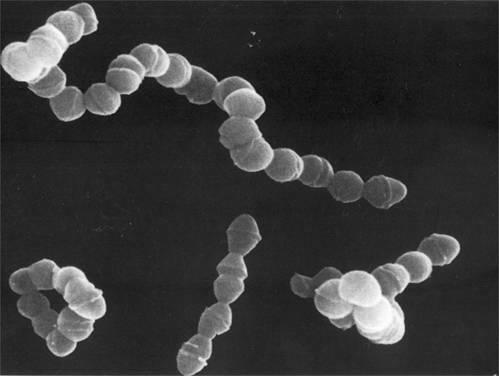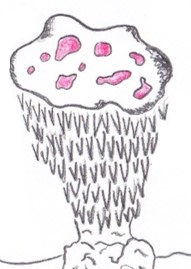
Medicine
H. peckii produces a number of secondary metabolites
that are potentially valuable medicinal compounds. One such
metabolite is atromentin which is known to have anticoagulant
properties similar to those of the widely used pharmaceutical
heparin.  Like heparin, atromentin was only effective
when administered intravenously instead of orally;
however, unlike heparin, the anticoagulant activity of atromentin was not neutralized with a protamine injection.
Another property that sets atromentin apart from heparin is its
tendency to illicit restriction of blood vessels in smooth
muscle tissue (Khanna et al.,1965). Atromentin has also been
shown to have antibacterial properties by aiding the inhibition
of the enzyme enoyl-ACP-reductase that many bacteria such as
Streptococcus pneumoniae use to synthesize lipids vital to
their survival (Zheng,2006).
Like heparin, atromentin was only effective
when administered intravenously instead of orally;
however, unlike heparin, the anticoagulant activity of atromentin was not neutralized with a protamine injection.
Another property that sets atromentin apart from heparin is its
tendency to illicit restriction of blood vessels in smooth
muscle tissue (Khanna et al.,1965). Atromentin has also been
shown to have antibacterial properties by aiding the inhibition
of the enzyme enoyl-ACP-reductase that many bacteria such as
Streptococcus pneumoniae use to synthesize lipids vital to
their survival (Zheng,2006).
Another medically beneficial chemical H. peckii produces
is thelephoric acid. Thelephoric acid has been found to
inhibit prolyl endopeptidase (PEP), an enzyme which plays a role in
deteriorating certain neuropeptides that are believed to
contribute to memory and learning. It has been shown that
Alzheimer's patients have a considerably higher PEP activity than
normal individuals. Moreover, research has shown that PEP may be
involved in processing a component of the amyloid beta protein that
forms extracellular plaques in the brain associated with
Alzheimer's disease (Kwak, 1999). Amyloid beta proteins amass
outside neurons and seem to induce the death of neighboring
cells (Campbell et al.,2008). The photograph below is a
microscopic view of the cerebral cortex of an Alzheimer's patient
and the pale pinkish mass in the the center is an amyloid plaque
that PEP likely helps produce. Given that thelephoric acid is a
known PEP inhibiter with potential to aid the fight against
Alzheimer's disease, and H.peckii is a known source of
thelephoric acid, it follows that H. peckii could be
an important ally in the future of Alzheimer's treatment and
prevention.
Given that thelephoric acid is a
known PEP inhibiter with potential to aid the fight against
Alzheimer's disease, and H.peckii is a known source of
thelephoric acid, it follows that H. peckii could be
an important ally in the future of Alzheimer's treatment and
prevention.
Apart from medicine for physical conditions, one may find therapeutic value in the art of mushroom dyeing.
